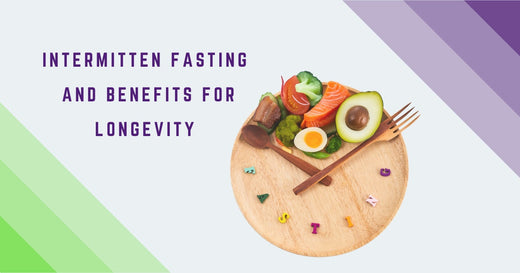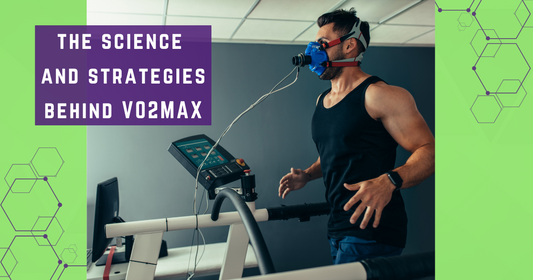As we age, our health and fitness significantly impact our longevity and quality of life. Fortunately, several simple tests can be performed at home to assess your physical fitness and potential longevity. These tests, including VO2 Max, Grip Strength, Sitting and Rising, Push-Ups, Heart Rate Recovery, and Single Leg Stand, offer valuable insights into your overall health. Let's explore each of these tests, their benefits, techniques, protocols, scientific research data, and ways to improve your performance in detail.
1. VO2 Max
VO2 Max, or maximal oxygen uptake, measures your body's ability to utilize oxygen during intense exercise. It is a strong indicator of cardiovascular fitness and overall endurance. Higher VO2 Max levels are associated with better heart health, improved athletic performance, and increased longevity.
Research has shown that higher VO2 Max levels are linked to a lower risk of chronic diseases and overall mortality. A study published in the Journal of the American Medical Association (JAMA) found that higher cardiorespiratory fitness, as measured by VO2 Max, was associated with a reduced risk of all-cause mortality .
VO2 Max is closely tied to mitochondrial function, capillary density, and cardiac output. Improved VO2 Max enhances oxygen delivery to muscles, increasing endurance and reducing fatigue. It also reflects the efficiency of the heart, lungs, and circulatory system, which are critical for longevity.
To improve your VO2 Max, engage in regular aerobic exercises such as running, cycling, swimming, or high-intensity interval training (HIIT). Gradually increase the intensity and duration of your workouts to challenge your cardiovascular system and enhance your endurance.
Techniques and Protocols:
Rockport Walk Test:
- Warm-Up: Warm up for 5-10 minutes with light exercise to prepare your muscles and cardiovascular system.
- Walk: Walk one mile (1.6 km) as fast as you can on a flat, measured surface.
- Record Time: Record the time it takes to complete the walk using a stopwatch.
- Measure Heart Rate: Immediately after finishing, measure your heart rate. You can do this manually or use a heart rate monitor.
- Calculate VO2 Max: Use the following formula to estimate your VO2 Max:
-
VO2Max = 132.853 − (0.0769 × weight in pounds) − (0.3877 × age)+ (6.315×gender) − (3.2649×time in minutes) − (0.1565 × heart rate)
VO2 Max = 132.853 - (0.0769 \times \text{weight in pounds}) - (0.3877 \times \text{age}) + (6.315 \times \text{gender}) - (3.2649 \times \text{time in minutes}) - (0.1565 \times \text{heart rate})
VO2Max=132.853−(0.0769×weight in pounds)−(0.3877×age)+(6.315×gender)−(3.2649×time in minutes)−(0.1565×heart rate) Note: For gender, use 1 for males and 0 for females.
Queen’s College Step Test:
- Equipment: Use a 16.25-inch (41.3 cm) step or bench.
- Step Rate: Step up and down at a rate of 22 steps per minute for females and 24 steps per minute for males, maintaining this pace for 3 minutes.
- Rest: After completing the step test, sit down and rest.
- Measure Heart Rate: Record your heart rate between 5 and 20 seconds after stopping.
-
Calculate VO2 Max: VO2Max = 65.81 − (0.1847 × heart rate for females)
VO2 Max = 65.81 - (0.1847 \times \text{heart rate for females})
VO2Max=65.81−(0.1847×heart rate for females) VO2Max = 111.33 − (0.42 × heart rate for males)
VO2 Max = 111.33 - (0.42 \times \text{heart rate for males})VO2Max=111.33−(0.42×heart rate for males)
6. Studies indicate that each 1 MET (metabolic equivalent) increase in exercise capacity corresponds to a 12% improvement in survival . VO2 Max is a direct measure of exercise capacity and can therefore be used to predict longevity.

2. Grip Strength
Grip strength is a reliable indicator of overall muscle strength and function. It is associated with longevity and reduced risk of chronic diseases. Stronger grip strength is linked to lower mortality rates, better physical function, and decreased risk of falls and fractures.
Research by Mark D. Peterson and colleagues found that lower grip strength is associated with a higher risk of all-cause mortality. Their study published in The Lancet highlighted that grip strength was a stronger predictor of all-cause and cardiovascular mortality than systolic blood pressure.
The study by Peterson et al. found that every 5 kg decrease in grip strength was associated with a 16% increase in all-cause mortality risk .
Protocol:
You will need a hand dynamometer for this test:
- Adjust Dynamometer: Adjust the dynamometer to fit your hand size.
- Position Hand: Hold the dynamometer in one hand with your arm at a right angle, ensuring your elbow is by your side.
- Squeeze: Squeeze the dynamometer with maximum effort for about 5 seconds.
- Record Reading: Record the reading displayed on the dynamometer.
- Repeat: Repeat the test with the other hand.
How to Improve:
To improve grip strength, incorporate exercises such as deadlifts, farmer's walks, and other weightlifting exercises that require a strong grip. Additionally, using hand grippers and performing wrist curls can help strengthen your grip.

3. Sitting and Rising Test
This test assesses flexibility, strength, and balance. It has been linked to predicting mortality risk. Higher scores are associated with a lower risk of mortality, indicating better musculoskeletal fitness and balance.
Technique and Protocol:
- Stand: Stand barefoot on a flat, non-slip surface.
- Sit: From a standing position, sit down on the floor without using your hands, knees, or other body parts for support.
- Stand Up: Try to stand back up without using your hands or any other support.
- Scoring: Start with 10 points. Deduct 1 point for each support used (hand, knee, etc.) and 0.5 points for partial supports.
Scoring Details:
- Full Score (10 points): No supports used.
- Moderate Score (7-9 points): One or two supports used.
- Low Score (0-6 points): Multiple supports used.
How to Improve:
To improve your score on the Sitting and Rising Test, incorporate flexibility exercises such as yoga and stretching routines into your fitness regimen. Strength training exercises, particularly for the lower body, will also help improve your ability to sit and rise without support.
Scientific Research Data:
A study published in the European Journal of Preventive Cardiology found that individuals scoring below 8 on the Sitting and Rising Test were 2-5 times more likely to die within the next six years compared to those scoring higher.

4. Push-Ups
Push-ups are a great measure of upper body strength and muscular endurance. Higher push-up capacity is associated with lower cardiovascular disease risk and improved overall fitness.
Technique and Protocol:
- Starting Position: Begin in a plank position with your hands shoulder-width apart and your body in a straight line from head to heels.
- Lower Body: Lower your body until your chest nearly touches the floor, keeping your elbows close to your body.
- Push Up: Push back up to the starting position.
- Count: Count the maximum number of push-ups you can perform without resting.
Push-Up Technique:
- Maintain a Straight Line: Keep your body in a straight line from head to heels.
- Elbow Angle: Keep your elbows at a 45-degree angle to your body.
- Controlled Movement: Lower your body slowly and push up with controlled force.
How to Improve:
To improve your push-up capacity, incorporate a variety of push-up variations (e.g., wide-grip, diamond, decline) into your workout routine. Strength training exercises targeting the chest, shoulders, triceps, and core will also help enhance your push-up performance.
Scientific Research Data:
A study by Harvard University found that men who could do more than 40 push-ups had a significantly lower risk of cardiovascular disease compared to those who could do fewer than 10 push-ups.

5. Heart Rate Recovery
Heart rate recovery (HRR) is a measure of how quickly your heart rate returns to normal after exercise. A faster recovery rate indicates better cardiovascular fitness and a lower risk of heart-related issues.
Importance of HRR for Longevity:
HRR is a significant predictor of cardiovascular health. A slower recovery rate can indicate a higher risk of heart disease and other cardiovascular conditions, whereas a faster recovery rate is linked to improved autonomic function and overall heart health.
Technique and Protocol:
- Exercise: Perform a moderate to vigorous exercise (e.g., brisk walking or jogging) for 5 minutes.
- Measure Heart Rate: Immediately after stopping, measure your heart rate.
- Rest: Rest for 1 minute.
- Measure Again: Measure your heart rate again exactly 1 minute after stopping exercise.
- Calculate Difference: Calculate the difference between the two heart rates. The greater the difference, the better your heart rate recovery.
How to Improve:
To improve heart rate recovery, engage in regular cardiovascular exercise such as running, cycling, or swimming. Interval training, where you alternate between high and low-intensity exercise, can be particularly effective in improving HRR.
Scientific Research Data:
A study published in the New England Journal of Medicine found that a heart rate recovery of less than 12 beats per minute was associated with a higher risk of death from all causes.

6. Single Leg Stand
The single leg stand test assesses balance and core strength. Poor balance is associated with a higher risk of falls and decreased functional mobility, making this test a crucial indicator of overall physical stability.
Technique and Protocol:
- Stand: Stand barefoot on a flat, non-slip surface.
- Lift Leg: Lift one leg and balance on the other leg.
- Time: Time how long you can stand without wobbling or putting your foot down.
- Repeat: Repeat with the other leg.
Scoring Details:
- Full Score (30+ seconds): Excellent balance and core strength.
- Moderate Score (15-30 seconds): Good balance with some room for improvement.
- Low Score (<15 seconds): Poor balance indicating a higher risk of falls.
Data on Single Leg Stand and Longevity:
Studies have shown that individuals who can stand on one leg for longer periods tend to have a lower risk of falls and fractures, which is crucial for maintaining independence and longevity.
How to Improve:
To improve your balance, incorporate exercises such as yoga, tai chi, and specific balance training routines into your fitness regimen. Strengthening your core and lower body muscles through exercises like squats, lunges, and planks can also enhance your balance.
Scientific Research Data:
A study published in the British Journal of Sports Medicine found that an inability to stand on one leg for 10 seconds in later life is linked to nearly double the risk of death from any cause within the next 10 years.





